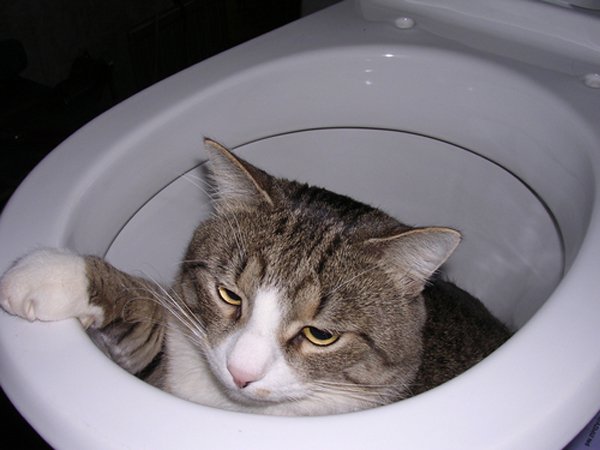Why You Shouldn't Flush Cat Poop Down Your Toilet - Preserve Your Plumbing System
Why You Shouldn't Flush Cat Poop Down Your Toilet - Preserve Your Plumbing System
Blog Article
Just about everyone has their own individual thinking involving Don’t flush cat feces down the toilet.

Introduction
As pet cat owners, it's vital to bear in mind how we throw away our feline close friends' waste. While it may seem convenient to flush feline poop down the toilet, this method can have damaging consequences for both the setting and human health.
Ecological Impact
Flushing feline poop presents dangerous virus and bloodsuckers right into the water supply, posing a considerable threat to water ecological communities. These impurities can adversely affect aquatic life and concession water high quality.
Wellness Risks
In addition to environmental concerns, flushing cat waste can additionally pose health threats to people. Feline feces might have Toxoplasma gondii, a bloodsucker that can trigger toxoplasmosis-- a potentially serious illness, particularly for pregnant females and people with damaged immune systems.
Alternatives to Flushing
Fortunately, there are more secure and a lot more accountable ways to take care of feline poop. Think about the complying with options:
1. Scoop and Dispose in Trash
The most usual approach of throwing away cat poop is to scoop it into a biodegradable bag and throw it in the trash. Be sure to use a devoted clutter inside story and get rid of the waste immediately.
2. Use Biodegradable Litter
Go with biodegradable cat trash made from products such as corn or wheat. These litters are eco-friendly and can be safely gotten rid of in the garbage.
3. Hide in the Yard
If you have a yard, consider burying pet cat waste in a designated location away from vegetable gardens and water resources. Make sure to dig deep enough to avoid contamination of groundwater.
4. Set Up a Pet Waste Disposal System
Purchase a pet garbage disposal system especially created for cat waste. These systems use enzymes to break down the waste, lowering smell and environmental impact.
Verdict
Responsible family pet possession extends beyond supplying food and shelter-- it also includes appropriate waste management. By refraining from flushing pet cat poop down the commode and choosing alternate disposal methods, we can lessen our ecological impact and shield human health and wellness.
Why Can’t I Flush Cat Poop?
It Spreads a Parasite
Cats are frequently infected with a parasite called toxoplasma gondii. The parasite causes an infection called toxoplasmosis. It is usually harmless to cats. The parasite only uses cat poop as a host for its eggs. Otherwise, the cat’s immune system usually keeps the infection at low enough levels to maintain its own health. But it does not stop the develop of eggs. These eggs are tiny and surprisingly tough. They may survive for a year before they begin to grow. But that’s the problem.
Our wastewater system is not designed to deal with toxoplasmosis eggs. Instead, most eggs will flush from your toilet into sewers and wastewater management plants. After the sewage is treated for many other harmful things in it, it is typically released into local rivers, lakes, or oceans. Here, the toxoplasmosis eggs can find new hosts, including starfish, crabs, otters, and many other wildlife. For many, this is a significant risk to their health. Toxoplasmosis can also end up infecting water sources that are important for agriculture, which means our deer, pigs, and sheep can get infected too.
Is There Risk to Humans?
There can be a risk to human life from flushing cat poop down the toilet. If you do so, the parasites from your cat’s poop can end up in shellfish, game animals, or livestock. If this meat is then served raw or undercooked, the people who eat it can get sick.
In fact, according to the CDC, 40 million people in the United States are infected with toxoplasma gondii. They get it from exposure to infected seafood, or from some kind of cat poop contamination, like drinking from a stream that is contaminated or touching anything that has come into contact with cat poop. That includes just cleaning a cat litter box.
Most people who get infected with these parasites will not develop any symptoms. However, for pregnant women or for those with compromised immune systems, the parasite can cause severe health problems.
How to Handle Cat Poop
The best way to handle cat poop is actually to clean the box more often. The eggs that the parasite sheds will not become active until one to five days after the cat poops. That means that if you clean daily, you’re much less likely to come into direct contact with infectious eggs.
That said, always dispose of cat poop in the garbage and not down the toilet. Wash your hands before and after you clean the litter box, and bring the bag of poop right outside to your garbage bins.
https://trenchlesssolutionsusa.com/why-cant-i-flush-cat-poop/

Do you enjoy reading up on Don’t flush cat feces down the toilet? Place a review directly below. We would be interested to hear your views about this piece. We are looking forward that you come back again in the near future. For those who appreciated our page plz remember to share it. I love reading our article about Can You Flush Cat Poop Down The Toilet?.
Click Here Report this page